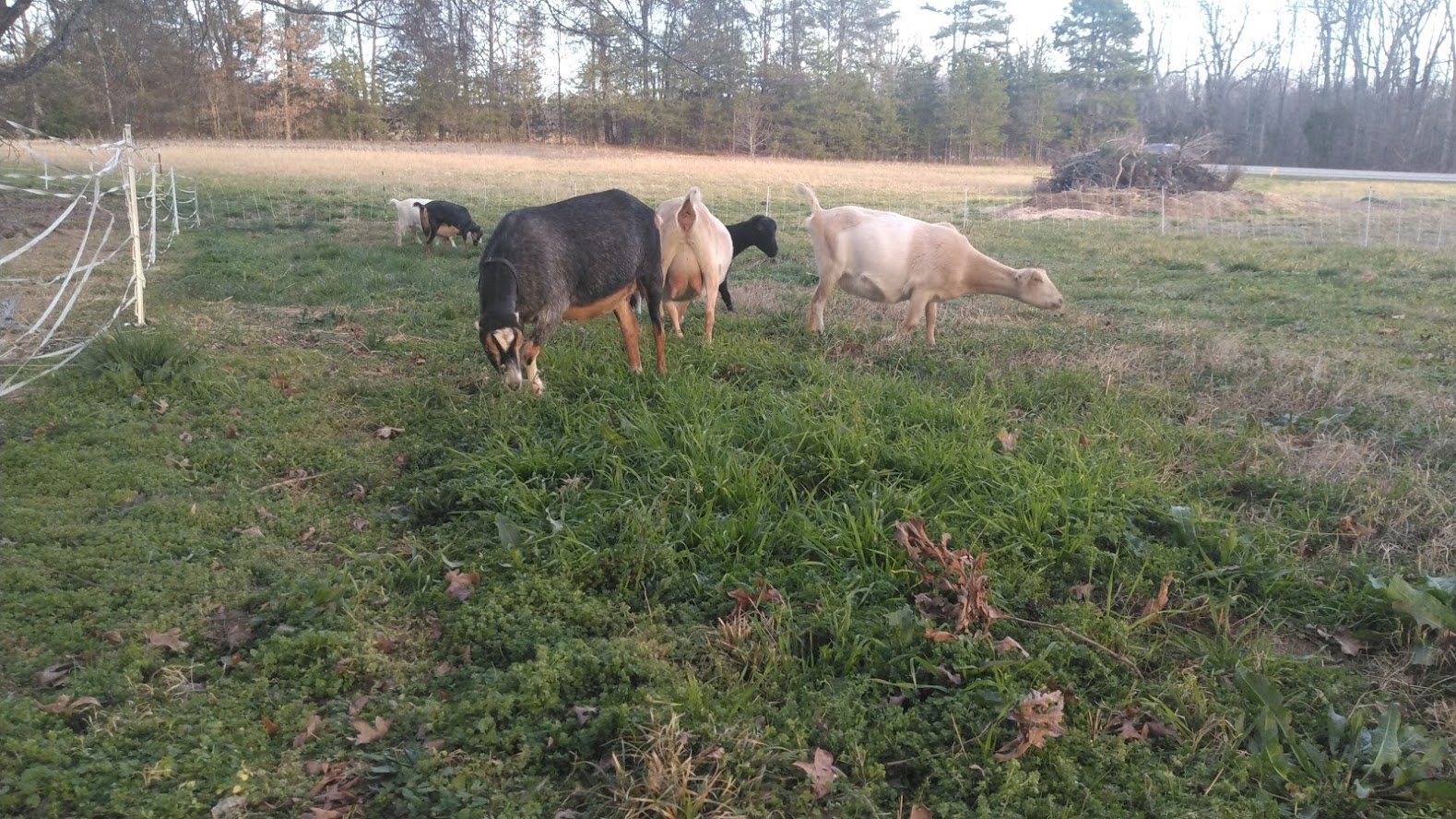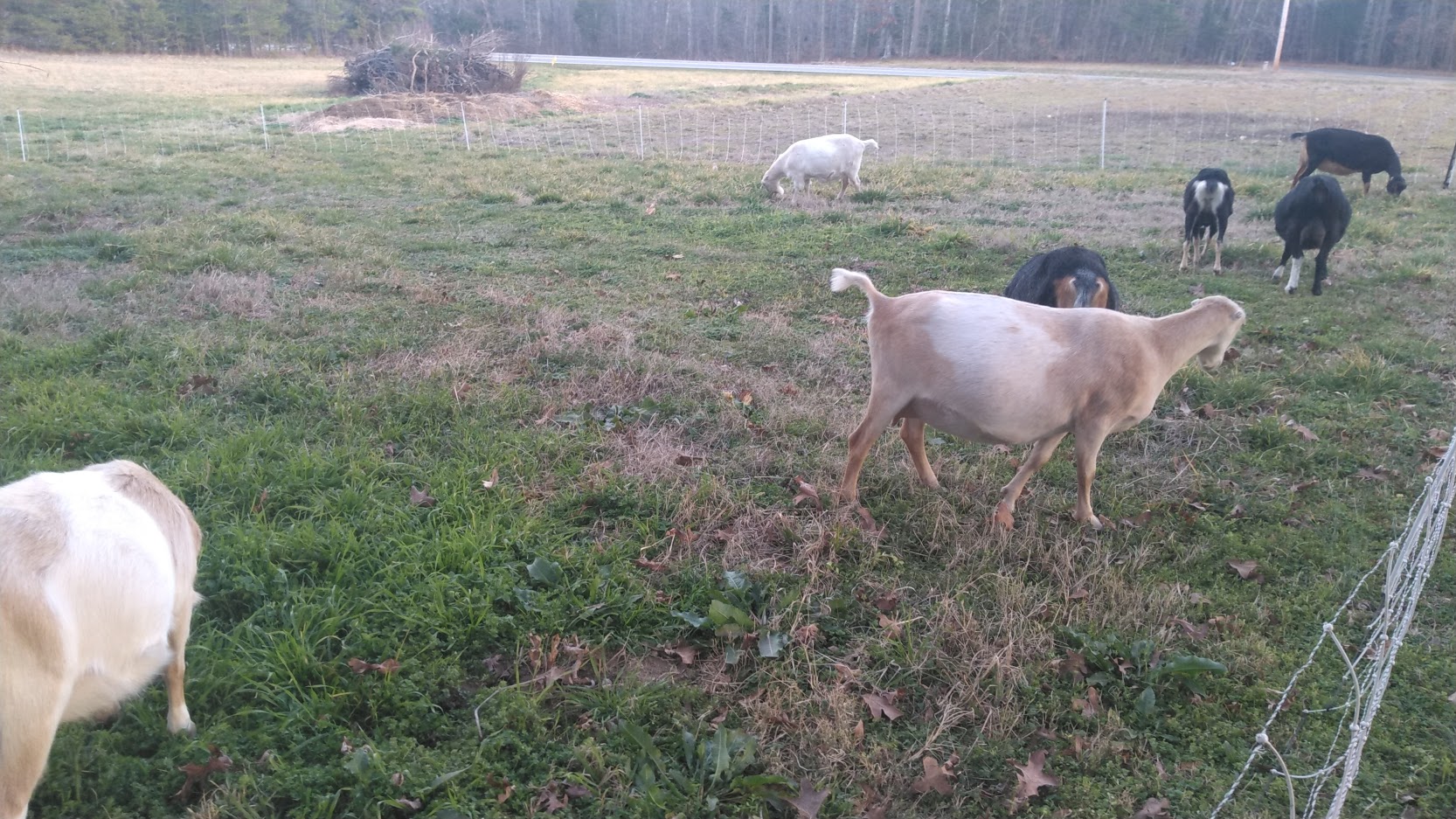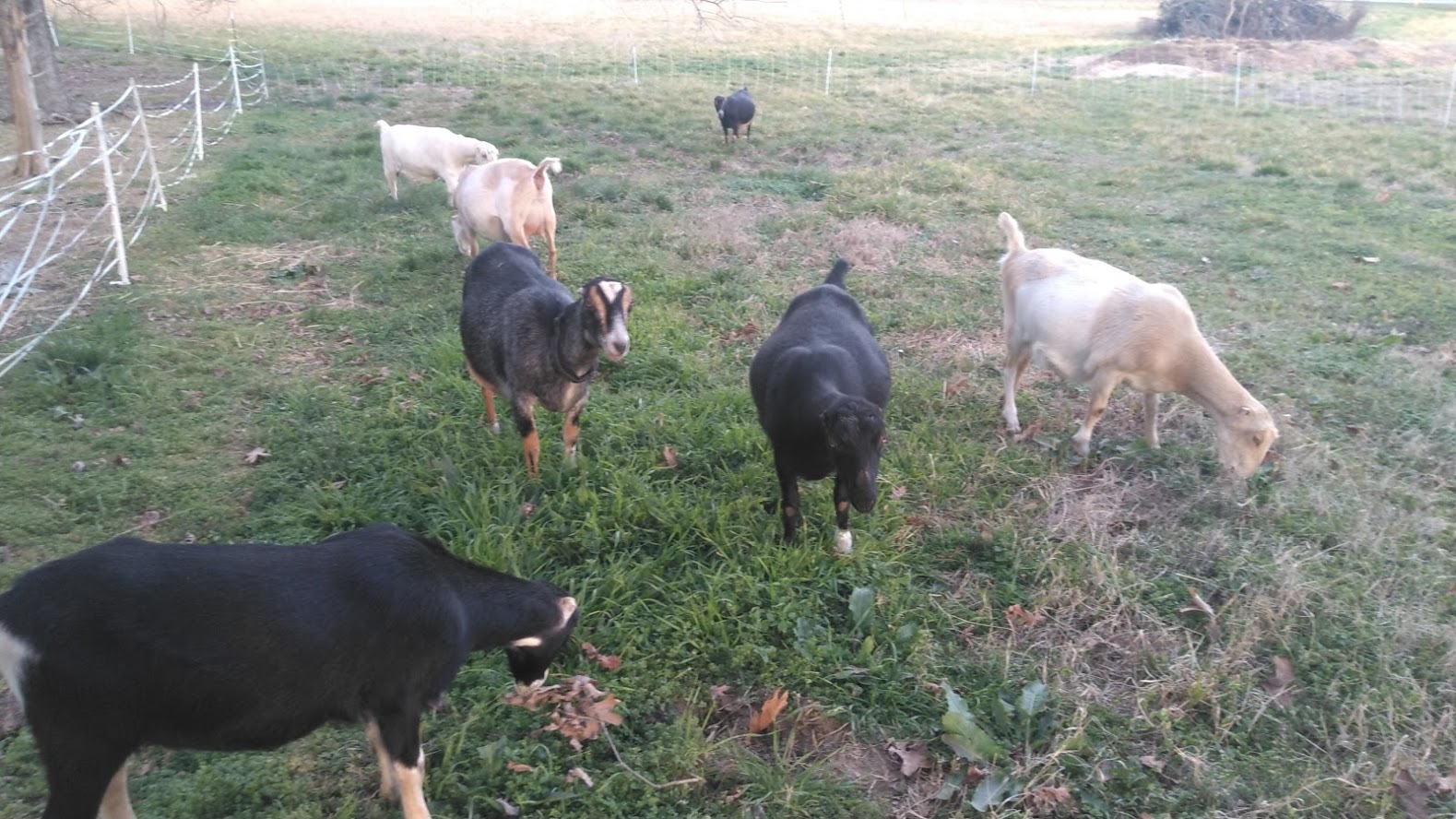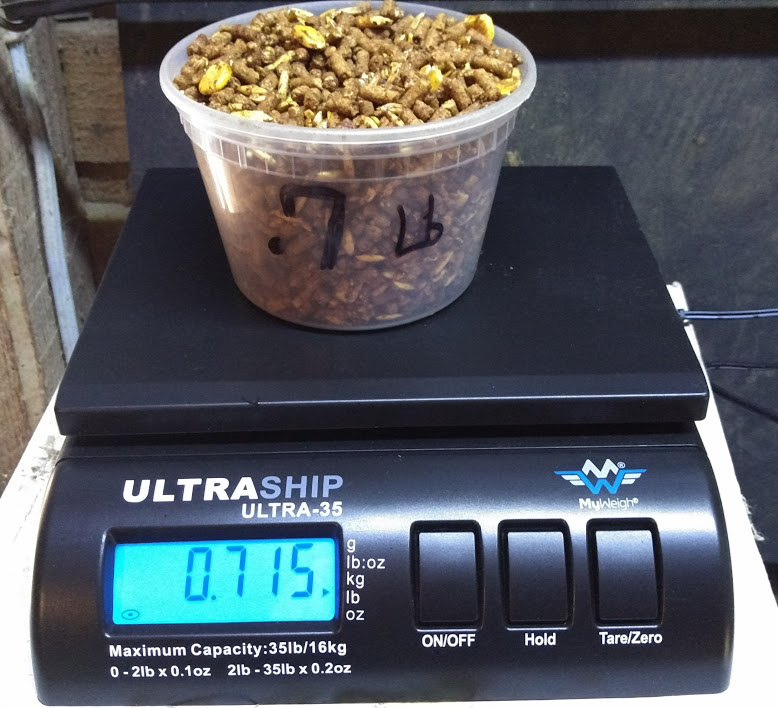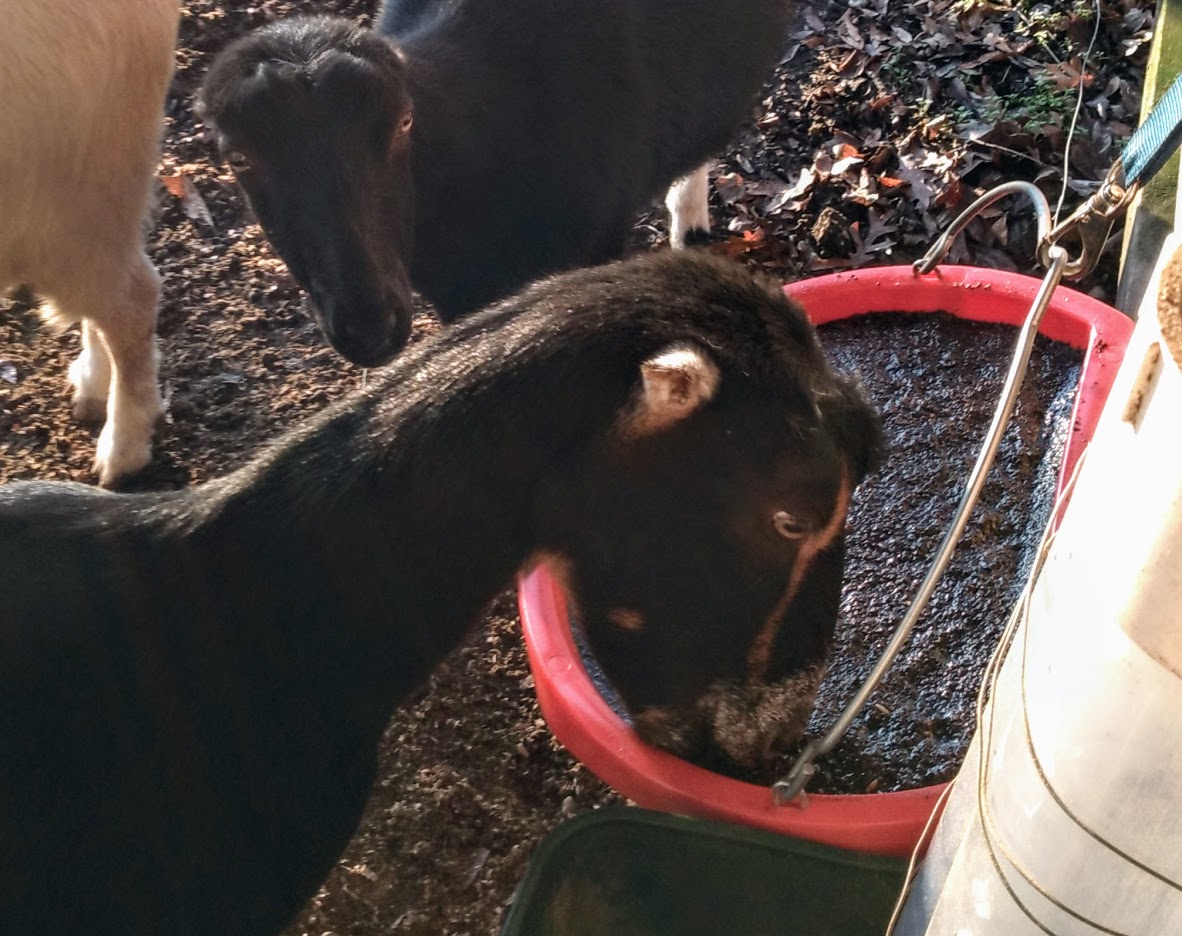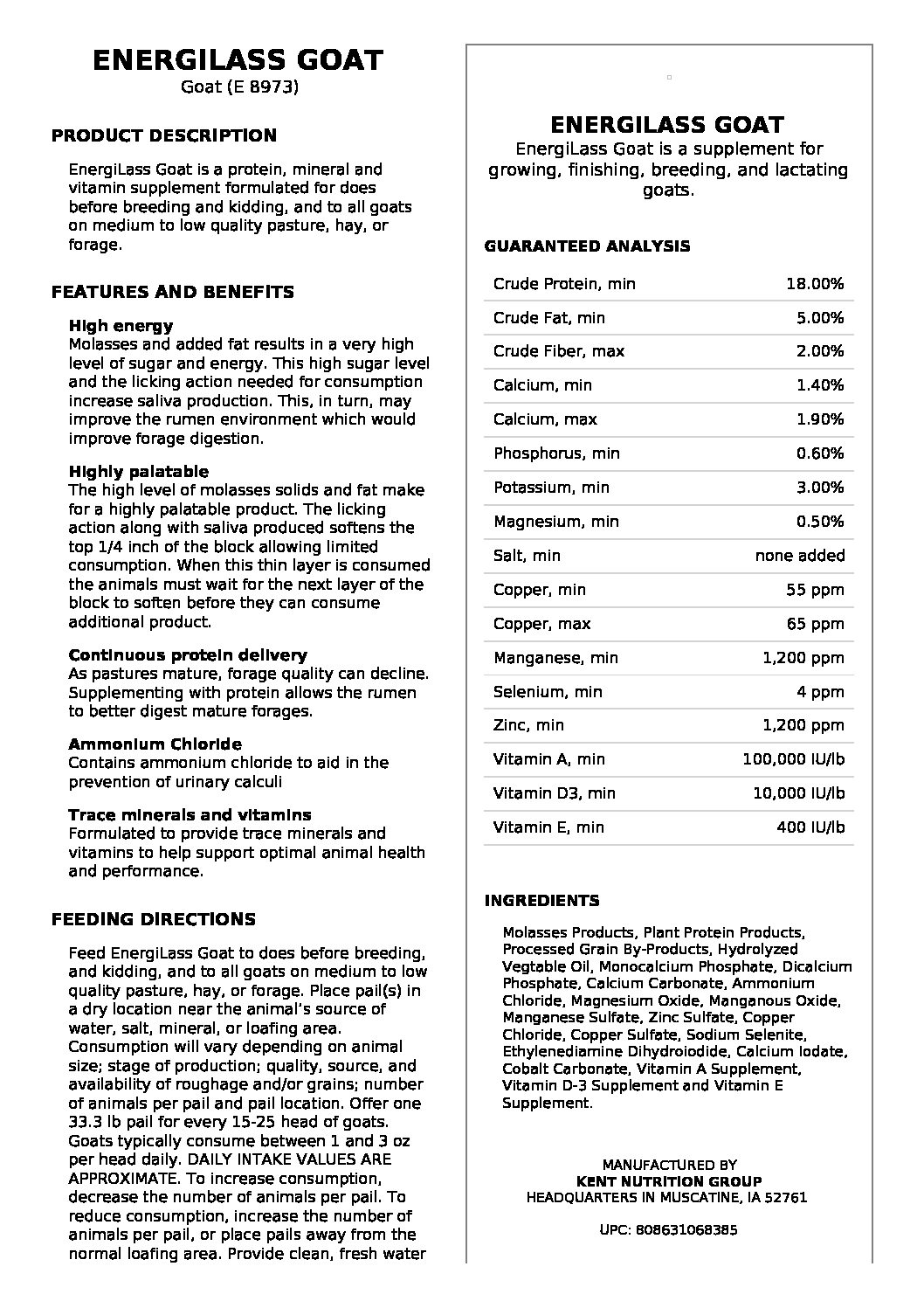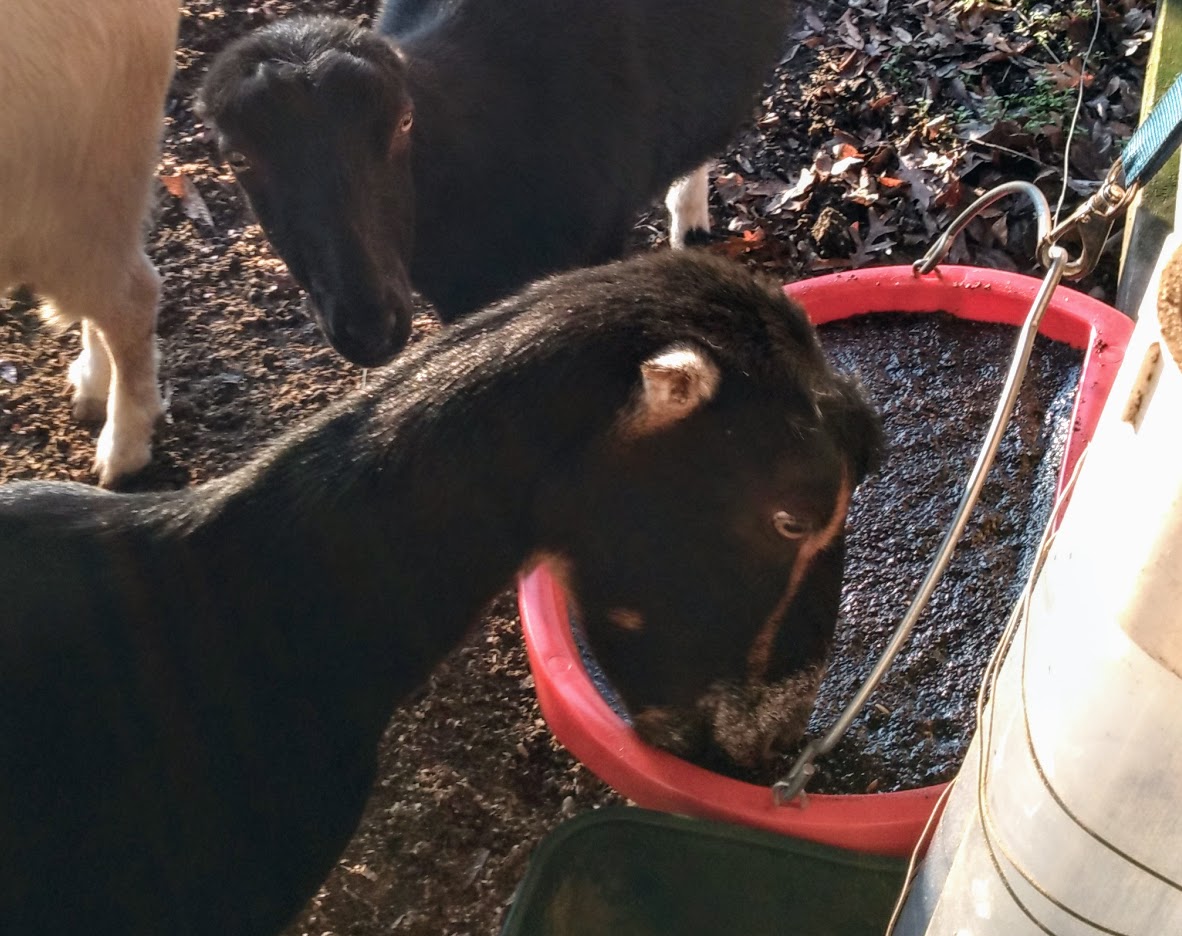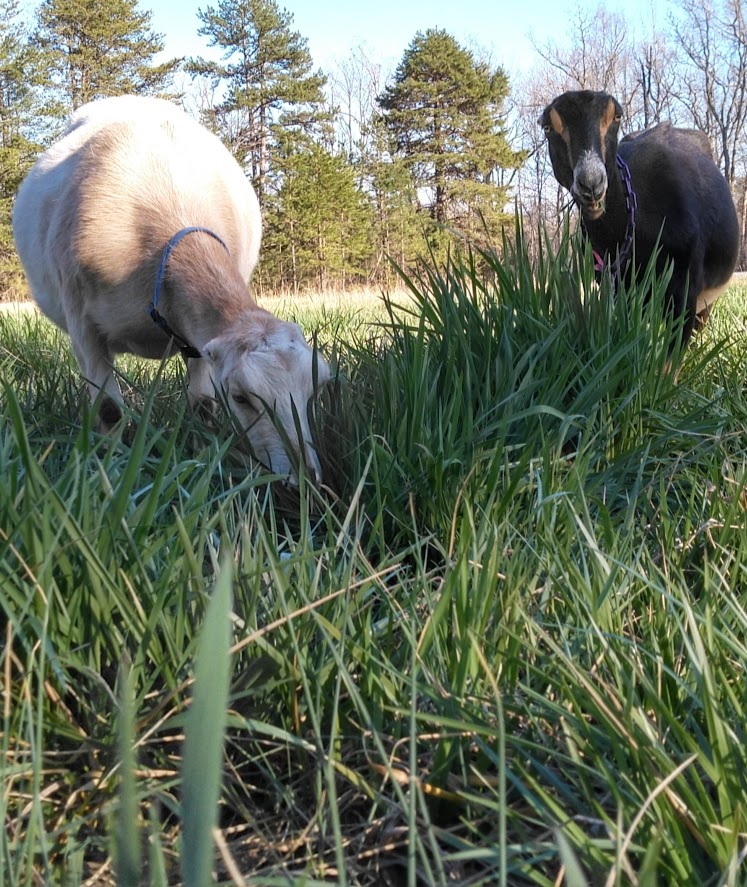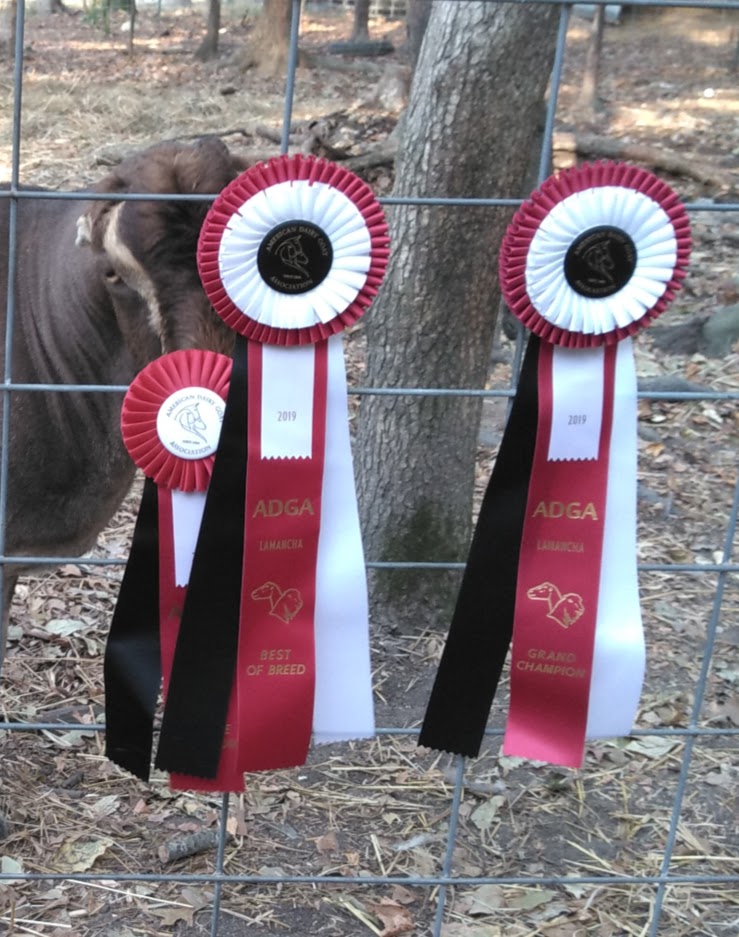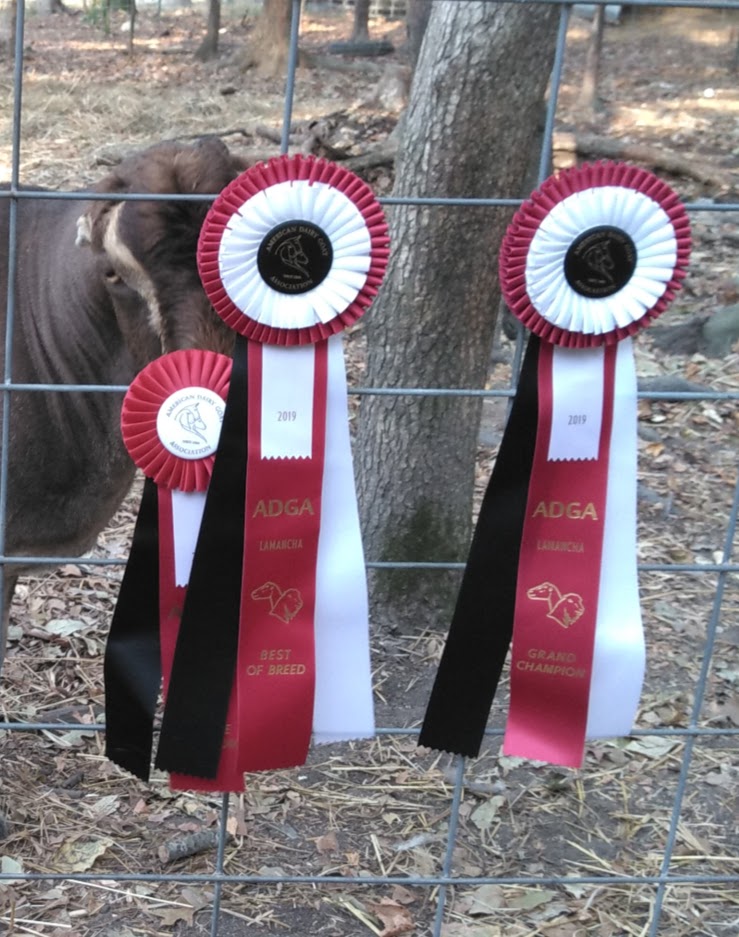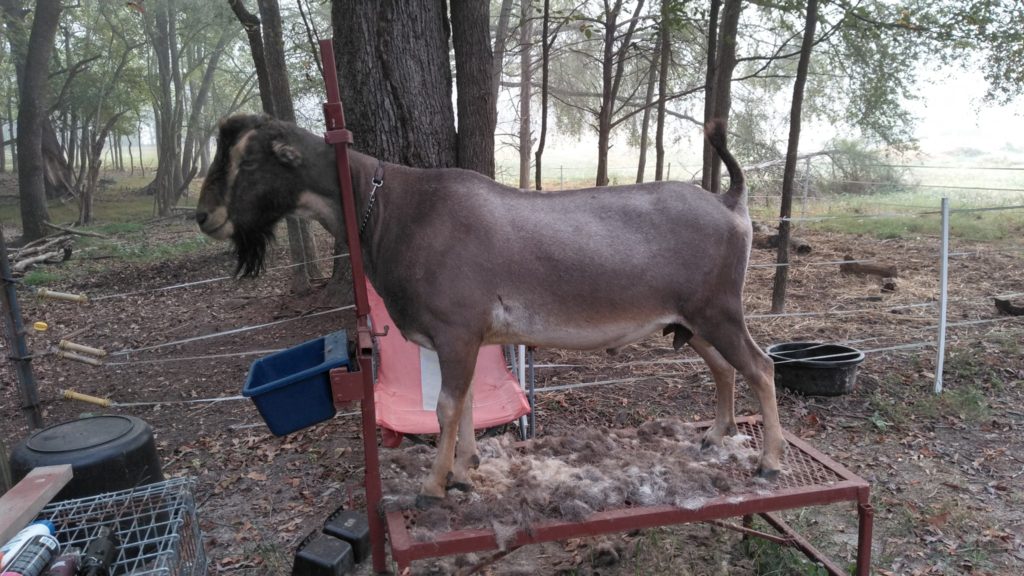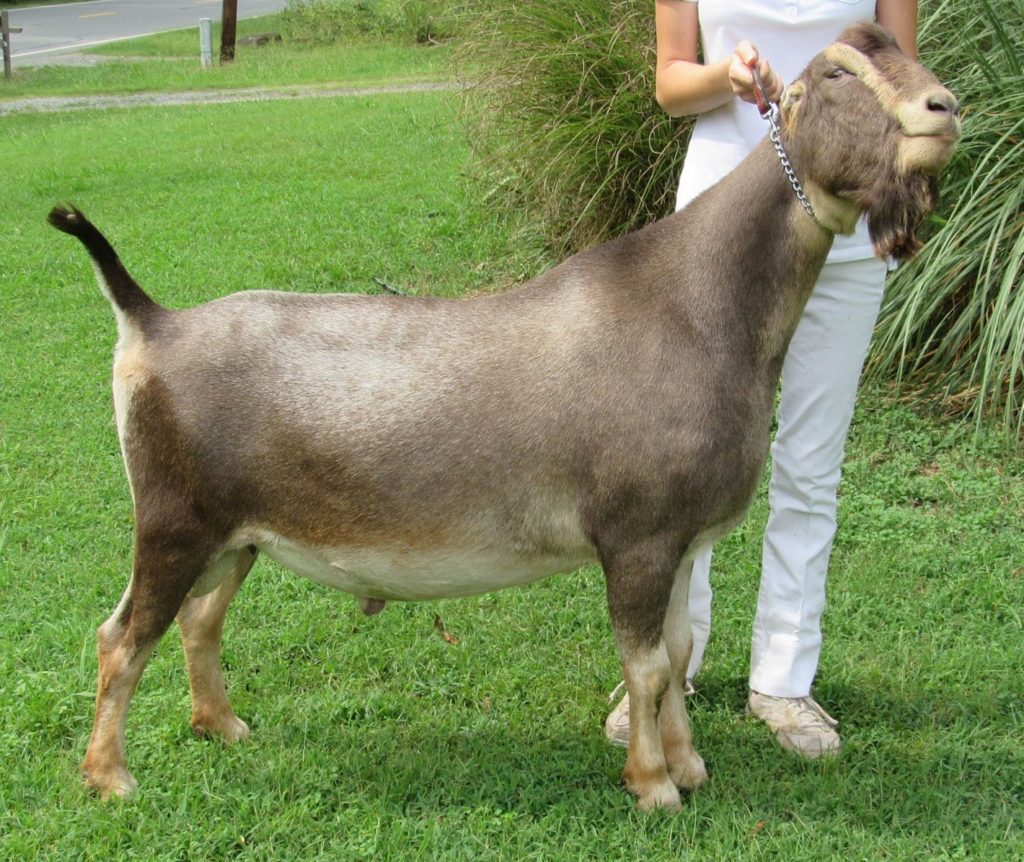With the does at their last 2-3 weeks of gestation, I am opening up small strips of pasture for them to graze on. This gives them fresh vitamins and extra calories! I will be sure to move them to another ‘strip’ after 5-6 days to help break the internal parasites life cycle. I’ve used electrical netting that is easy to move.
GREAT Article by PSU: Prevent Parasites Through Grazing Management
- A few quotes from the Penn State article above
- Larva can survive for long periods, even as long as 120 days, when weather conditions are cool and moist. However, when the weather is hot and dry, those parasites can die very quickly.
- [the infective stage of parasite eggs] can take as little as six days to go from egg to infective stage. Therefore, producers can use grazing rotations to stay ahead of this cycle.
- Parasites can also go into a hypobiotic or dormant state inside sheep or goats. Parasites can remain in this state until environmental conditions improve. Sheep and goat producers often see problems when this occurs during the summer.
- Most parasite larva are found in the first two inches of forage growth, so the goal is to move the sheep and goats out of a field before they graze down to levels where parasite larva will be consumed.
- Producers should cull animals that they consistently treat more often than most animals in the flock or herd. This allows producers to develop genetics that are more resistant to parasite infections. The parasites will still be present, but the animal’s immune system can better withstand the infection.
